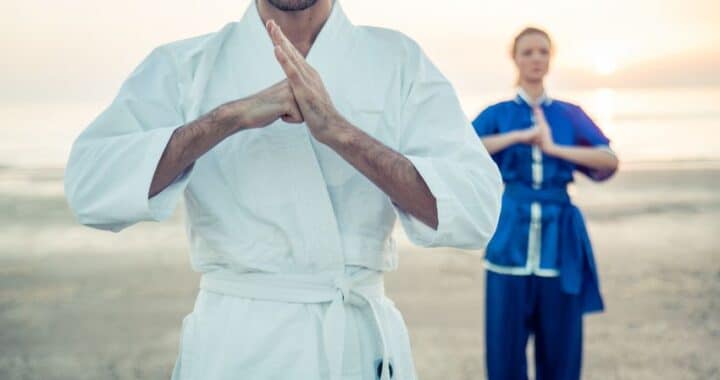Whats the difference between Capoeira and Aikido? In this article, we’ll explore the origins, philosophies, techniques, and training requirements of these two martial arts.
Discover the practical applications and real-world effectiveness of Capoeira and Aikido, and gain insight into which art might suit you best.
Get ready to dive into the captivating world of Capoeira and Aikido, where dynamic movements and powerful techniques await.
Origins and History
Capoeira, a Brazilian art form, emerged during the time of slavery. Enslaved Africans disguised their self-defense techniques as a dance to evade suspicion from their captors. This unique blend of dance, acrobatics, and martial arts allowed them to practice and preserve their culture under the guise of entertainment.
Aikido was developed in Japan by Morihei Ueshiba. He combined his knowledge of various martial arts, philosophy, and spirituality to create a non-aggressive form of self-defense. Ueshiba believed in harmonizing with the opponent’s movements and redirecting their energy rather than meeting force with force.
Both Capoeira and Aikido showcase the resilience and adaptability of their respective cultures, making them fascinating martial arts with deep historical roots.
Philosophical Differences
Capoeira, a Brazilian martial art, emphasizes fluidity, rhythm, and acrobatics. It’s rooted in the concept of self-expression and creativity, using movements that flow seamlessly from one to another. The philosophy of Capoeira centers around the idea of using agility and cunning to outsmart opponents, rather than direct confrontation.
In contrast, Aikido, a Japanese martial art, focuses on harmony and blending with the attacker’s energy. It emphasizes redirecting and neutralizing aggression through circular movements and joint locks. Aikido practitioners strive for a non-violent resolution and view martial arts as a means of personal growth and self-improvement.
While Capoeira values individual expression and evasion, Aikido emphasizes harmony and redirecting energy.
Techniques and Movements
Capoeira emphasizes acrobatic movements, fluidity, and deceptive footwork. Practitioners use kicks, sweeps, and spins to confuse and outmaneuver opponents. The ginga, a rhythmic swaying motion, is a fundamental movement in Capoeira that allows practitioners to transition smoothly between attacks and defensive maneuvers.
Aikido focuses on blending with an opponent’s energy and redirecting it. Techniques in Aikido involve joint locks, throws, and pins, utilizing circular movements and precise timing. Rather than relying on brute force, Aikido practitioners aim to neutralize aggression with minimal effort.
Both martial arts emphasize the importance of body awareness, balance, and agility, but they employ different strategies and techniques to achieve their goals.
Training and Practitioner Requirements
To become proficient in either martial art, you must dedicate yourself to rigorous training and meet specific requirements.
In Capoeira, training involves a combination of physical conditioning, acrobatics, music, and dance. You’ll learn various kicks, sweeps, and takedowns, as well as how to play traditional instruments and sing songs in Portuguese. Flexibility, agility, and coordination are essential for Capoeira practitioners.
On the other hand, Aikido training focuses on techniques that redirect an opponent’s energy and use it against them. You’ll practice throws, joint locks, and pins, while emphasizing fluidity and blending with your attacker. Balance, timing, and awareness are crucial in Aikido.
Both martial arts require discipline, commitment, and consistency to progress and reach a high level of proficiency.
Practical Applications and Real-World Effectiveness
When comparing Capoeira and Aikido, you’ll find that their practical applications and real-world effectiveness differ significantly.
Capoeira, with its dynamic movements and acrobatics, is primarily a martial art disguised as a dance. It’s known for its fluidity and emphasis on creativity, making it more suitable for self-expression and cultural preservation rather than practical combat situations.
On the other hand, Aikido focuses on redirecting an opponent’s energy and using joint locks and throws to neutralize attacks. Its emphasis on blending and harmony makes it effective for self-defense in real-world scenarios. Aikido’s techniques are designed to subdue and control opponents without causing unnecessary harm.
While both martial arts have their unique strengths, Aikido’s practical applications in self-defense situations give it an edge in real-world effectiveness.




